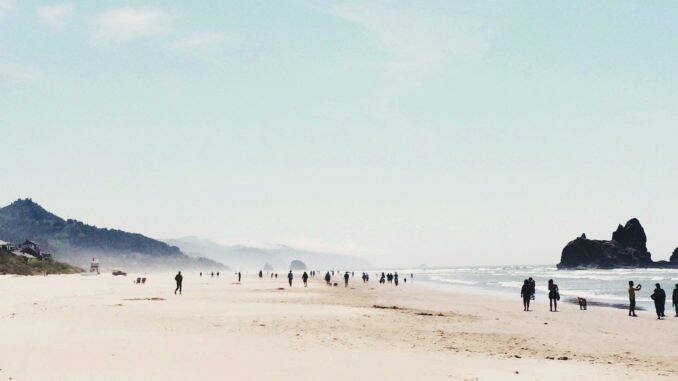
James Burns
Stellenbosch University
More than a billion people live along the world’s coastlines. But this coastal environment is under threat, endangering lives and livelihoods.
Human developments are interfering with many natural processes that form and maintain important coastal features such as beaches, dunes and estuaries and people are over-exploiting natural resources, such as fish stocks which are a critical source of food security. Sea-level rise and other effects of climate change, such as storm-wave surges and flooding, are exceeding the buffering capacities of the coastal zone, with homes, roads and other infrastructure such as beachfront resorts and hotels bearing the brunt of this destruction.
But technology, in the form of remote sensing, can help us to monitor and protect this vital environment.
Sandy coastlines, including beaches and dune systems, are particularly vulnerable to the effects of human developments. They require extraordinary levels of management to guarantee the flows and accumulation of sand which form them. For this management to be effective, we need to know how, for example, beaches physically respond to the effects of both development, especially relating to climate change, and our interventions.
But it is neither practical nor affordable to manually and repeatedly survey the physical characteristics of beaches and dunes: South Africa’s sandy coastline measures about 2,500 km, roughly the same as a return trip between Johannesburg and Cape Town.
Remote sensing technologies, which are easy to deploy and are very accurate, provide an alternative. These technologies include aerial photography, which has been used for more than a century, and Earth observation satellites, which have only been around for a few decades. The effectiveness of remote sensing depends largely on the sensors on the equipment. It all boils down to the sensors, which are basically cameras, on the equipment.
Many sensors are passive, meaning that they rely only on reflected sunlight to capture images of the Earth. Active remote sensors, on the other hand, emit their own signal and record what is reflected back at them. LiDAR, which stands for light detection and ranging, is an example of active remote sensing, and is what we, at Stellenbosch University, are using to research the country’s beaches.
Satellite- and aircraft-mounted LiDAR sensors emit and record reflected laser pulses, similar to an echo. These pulses travel at the speed of light and, because the speed of light is constant, we know exactly how long it takes for the pulse to hit its target and return to the sensor. This means we can very accurately record the distance between the sensor and its target.
LiDAR sensors emit dense clusters of laser pulses, like machine-gun fire, and these rapid-fire pulses pick up tiny differences in distances and so can tell what is happening in an area, rather than a point. The sensor also records differences in the intensity of returning laser pulses, which tells us what material it is hitting – whether sand or vegetation – by how much energy the material absorbs.
It would be impossible to do this sort of survey manually on a frequent basis – and because beaches are constantly shifting landscapes you would need to.
That is why LiDAR technology is so useful for a large country like South Africa, with its vast coastline and sandy beaches. From these sensors, we can tell how the coast changes.
There are established physical relationships between a beach’s slope, its average grain size and the energy of the waves that break on it. For example, if a beach has coarse grains of sand, it has steeper slopes. It is like a pile of laundry: when you put a sock on the side of a mound of washing, it will probably slip down, unless you wedge it in, and leave all the bigger items on top.
The opposite is true for beaches with fine grains of sand. If you put a sock on a flatter pile of washing, it will stay where you put it.
LiDAR measurements of beaches, repeated over time, can reveal changes, even subtle ones, in their physical state caused by human developments. They can also show how climate change is altering the beach landscape over time.
At the University of Stellenbosch, researchers are investigating data from LiDAR sensors on aircraft that flew over Cape Town’s False Bay beaches.
This data set, which looks at the possible average grain size of the beach sands, will be compared with one collected using a LiDAR sensor mounted on a tripod, like a professional camera, which analysed samples collected from a series of False Bay beaches. If the data sets match up – and show the sand grains to be the same size, then we will be able to confidently use the aircraft-mounted LiDAR sensors to measure and monitor changes in important physical characteristics of beaches in future.
While LiDAR technology will not reverse the environmentally damaging effects of human developments within the coastal zone, it will certainly help those people who are managing coasts and trying to adapt to these effects. It can do this by providing easily repeatable and extremely accurate measurements of important physical characteristics of the country’s beaches which are sensitive to the influences of human development, including climate change. Near real-time LiDAR data means that officials and policy makers can manage these changes before they endanger lives or property.

It seems to me that the dunes are being gouged away at Bettys Bay. I would be interested to know if this is so and whether we can expect it to continue.
Thanks for an interesting article.